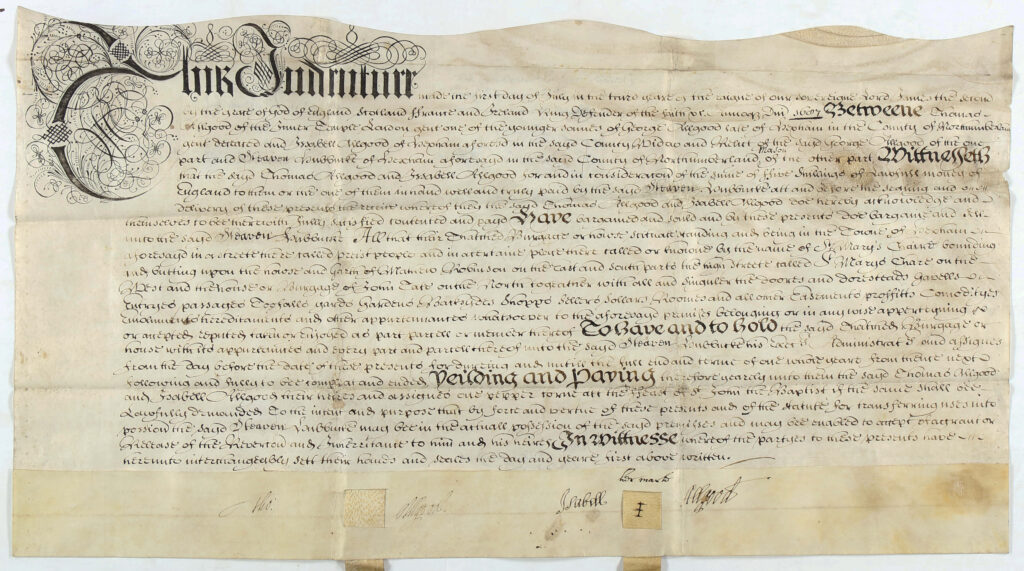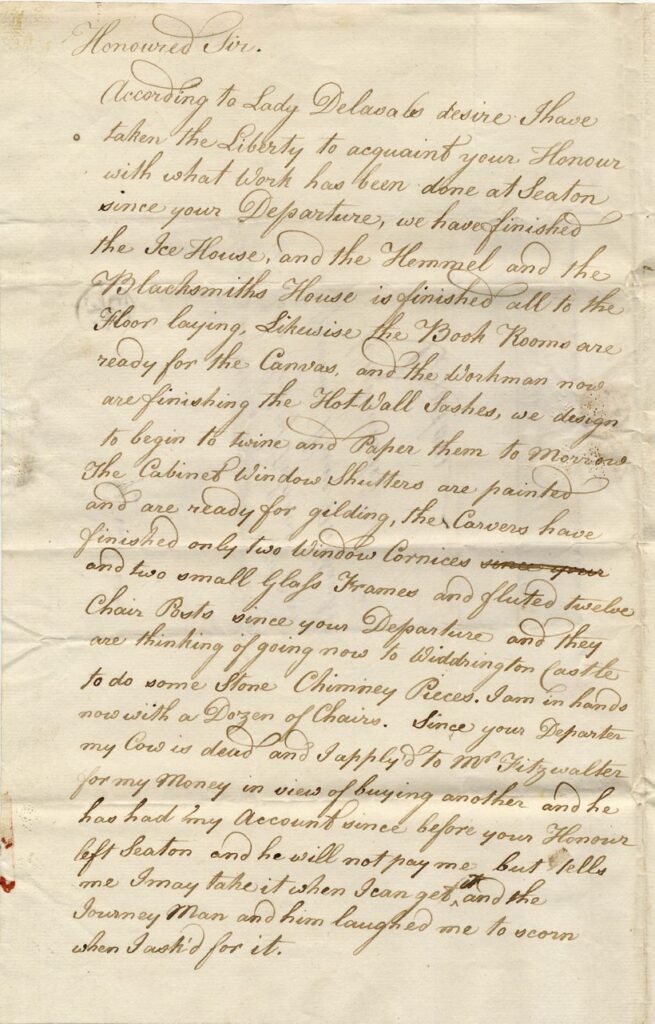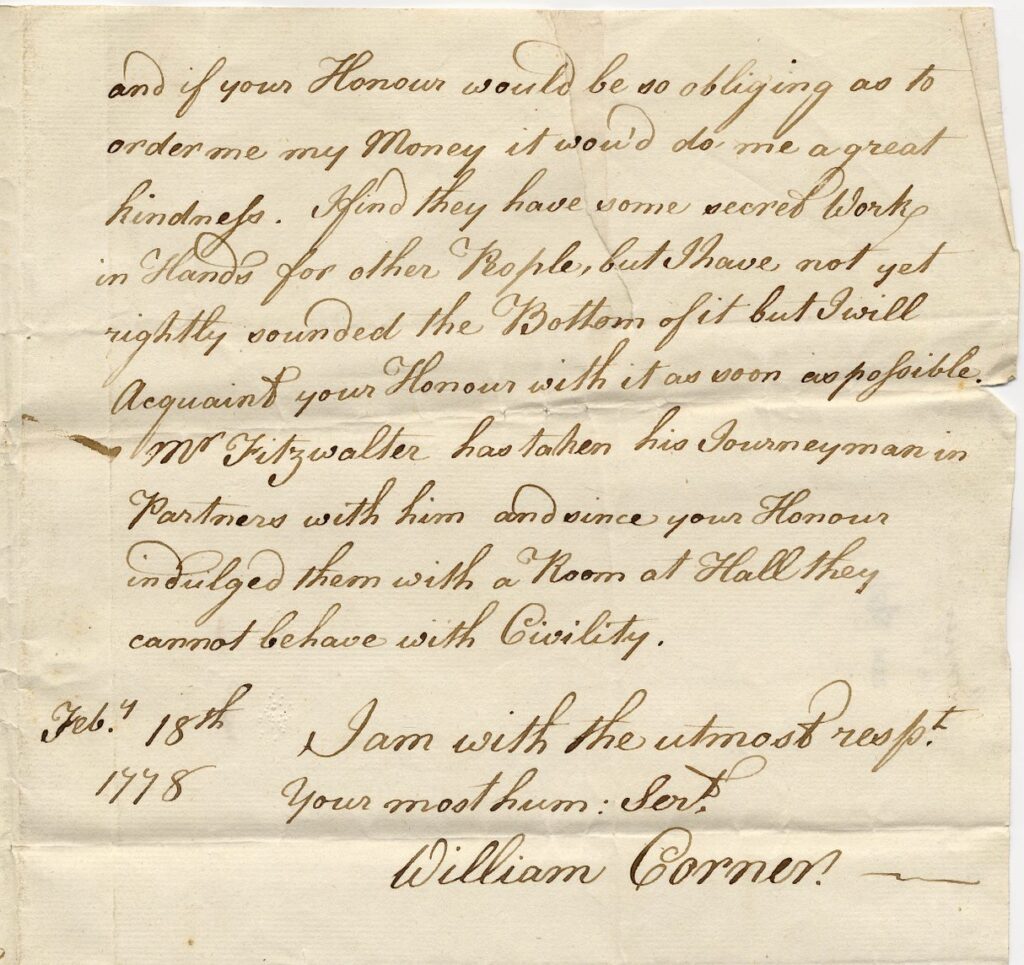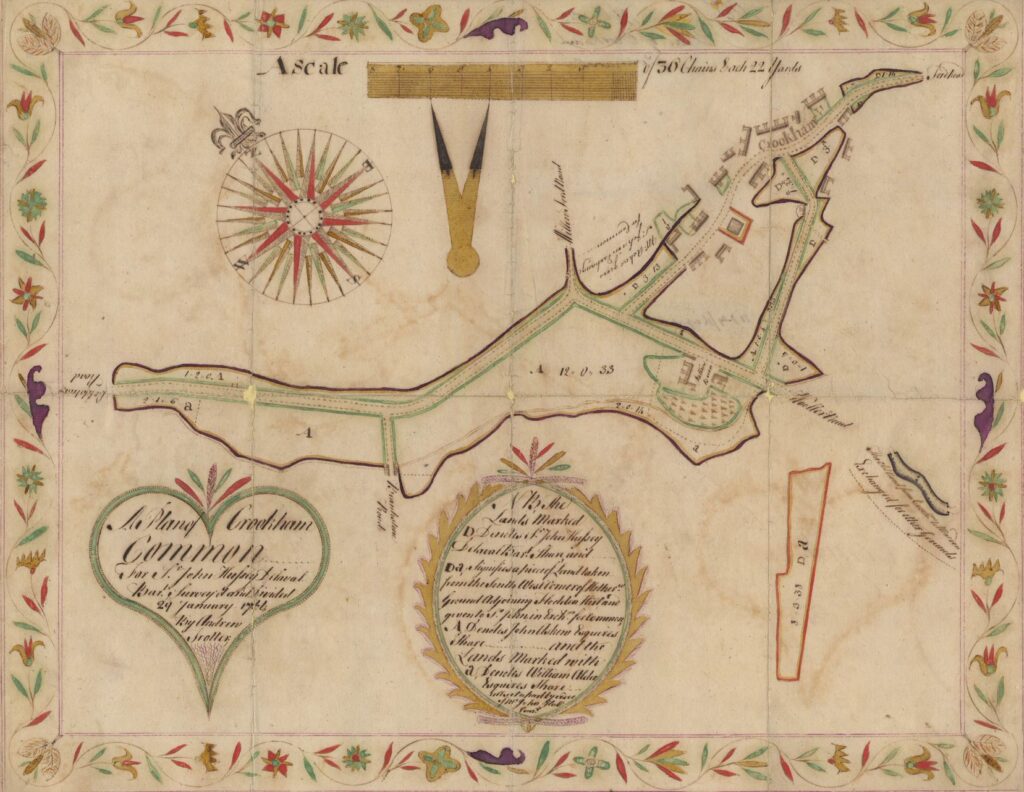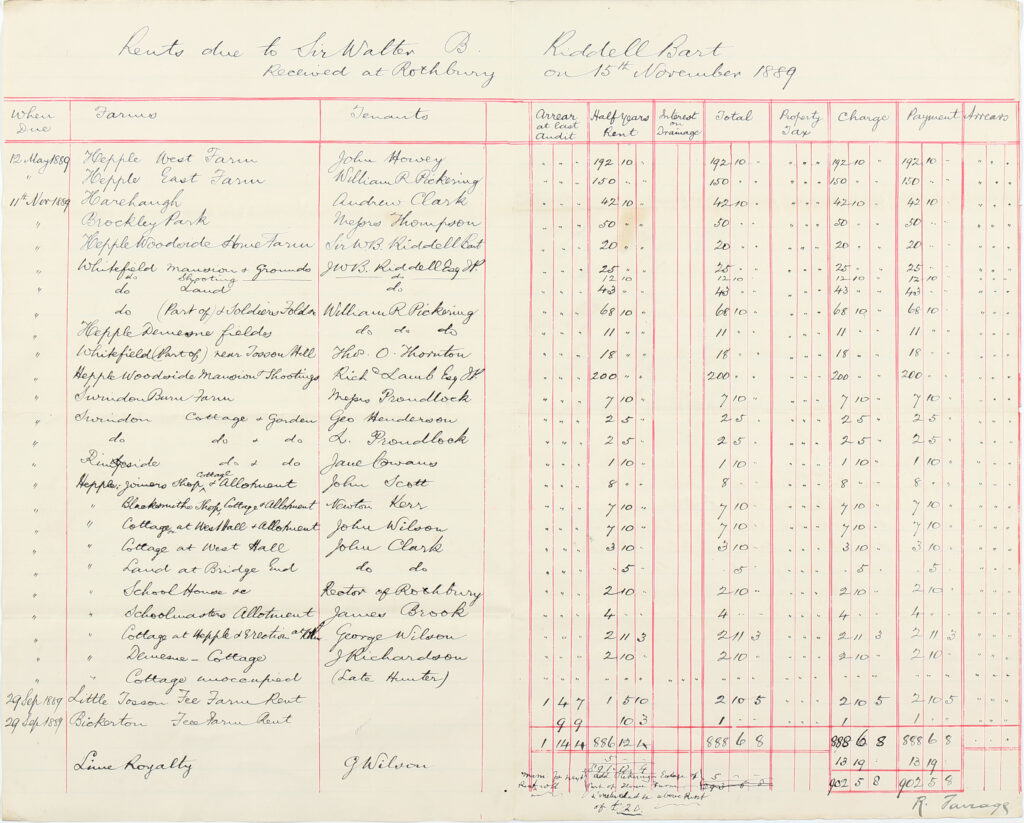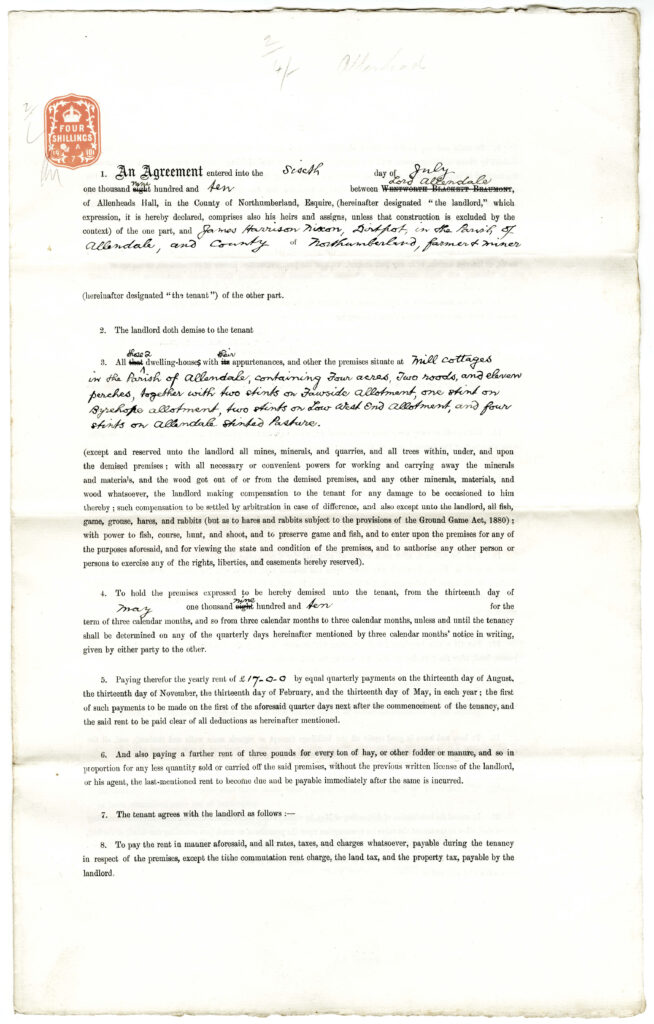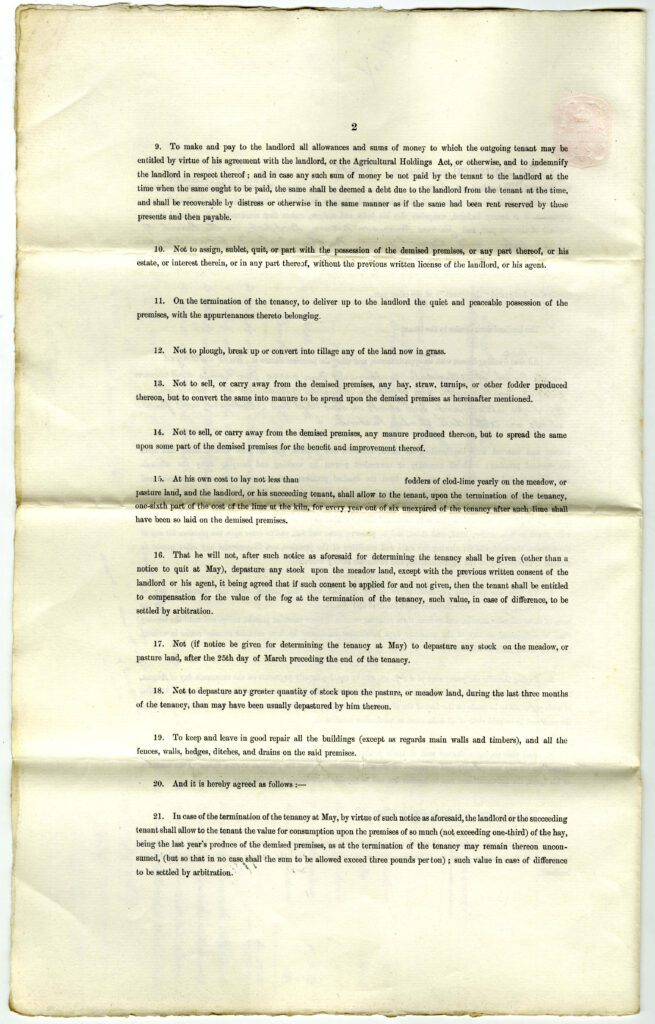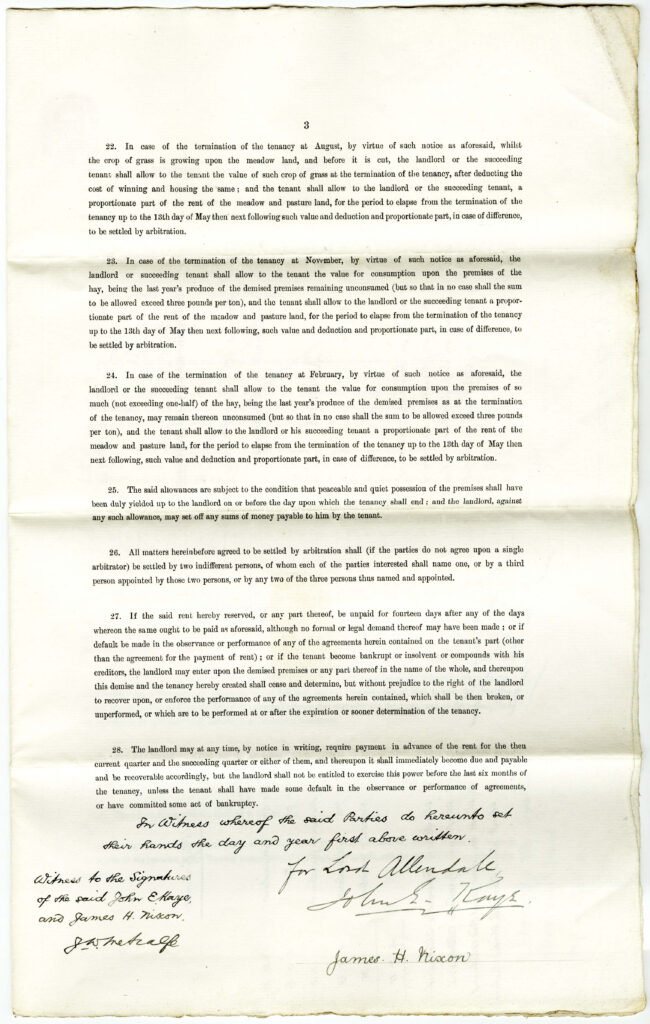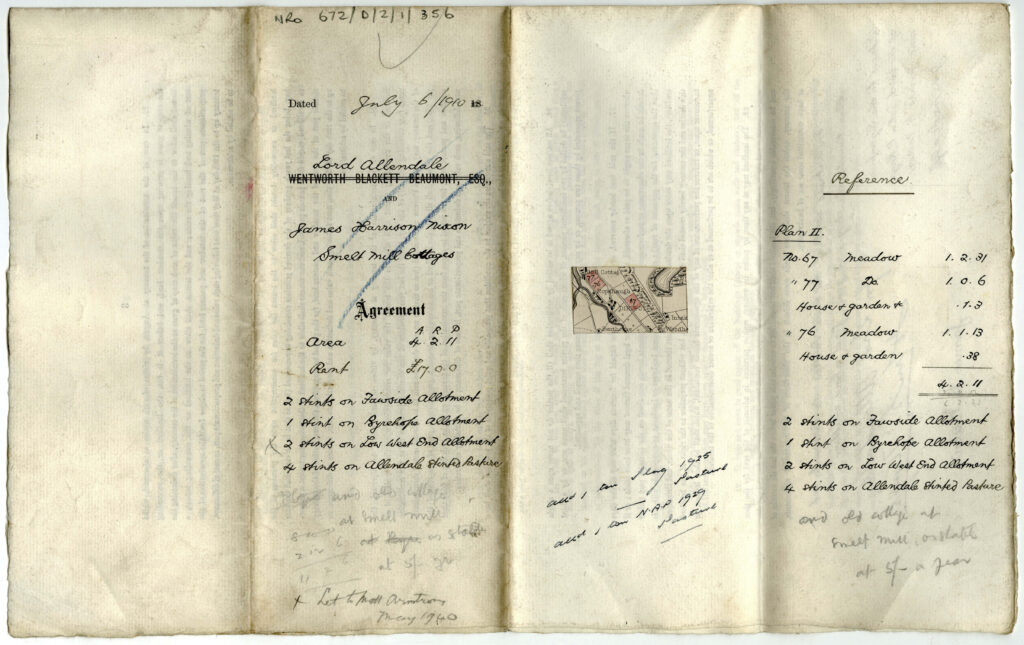ESTATE RECORDS
In some settlements a landed family or families were the major landowners with properties within the settlement rented out to individuals or businesses. These records are known as estate records. Northumberland Archives holds many collections of records of Northumberland estates. These records can be invaluable when researching the history of a property.
The main classes of record that support researching the history of a property that you might expect to find within estate collections are:
- Agent’s Correspondence
- Leases
- Plans
- Rent Accounts
- Rent Rolls
- Surveys
- Tenancy Agreements
Which Estate?
There are a number of ways to discover if the property you are researching formed part of an estate:
- Check the Tithe Map & Award – this will tell you who owned and occupied the property
- Check Land Tax Returns – at certain dates the Returns will record details of owner & occupier of the property
- Check 1910 Land Valuation records – these record details of owner & occupier of the property
- Check directories
- Check local history books – these tend to reference local landowners.
- Ask Northumberland Archives staff – they are knowledgeable and are aware of the major landowners in areas of the county.
The main landowners on the Hexham tithe map of 1839-1840 are the Beaumont, Bell and Kirsopp families. The Allgood family also owned property in Hexham in an earlier period. Areas of Hexham formed part of the Manor of Hexham.
Sometimes landowners stored records with their solicitor and these records may have been transferred to Northumberland Archives. For example, the records of Portnell & Rose, solicitors, of Hexham (ref: NRO 00491), include papers of the Gibson family of Hexham, some of which relate to properties owned by the family.
Locating Records
Searching Northumberland Archives catalogue is a good starting point to locating estate material – Online Catalogue – Northumberland Archives . Guidance around using the catalogue can be found here. Not all estate collections have been catalogued and even where they have the catalogue may not have been added to the online version. It is advisable to consult staff who can advise about our holdings. It is also worth consulting The National Archives DISCOVERY catalogue – Discovery | The National Archives. Some Northumberland Archives catalogues that have not been uploaded to our own online catalogue can be accessed here. Sometimes, the landowner may not be a local family. For example, areas of Morpeth were owned by the Earls of Carlisle and these records are held by Cumbria Archives. Using DISCOVERY you can search catalogues of repositories across England and Wales and at The National Archives. Searching for the property, street or settlement names can sometimes lead to the discovery of records held in non-local repositories.
Agents’ Correspondence
Correspondence between the agent and the landowner reporting on the business of the estate often refers to properties on the estate. In this example of 18 February 1778, William Corner, writes to Lord Delaval on reporting on work being undertaken on the Delaval estate. Several projects are in progress including work on a ‘Blacksmiths House’ that is ‘finished all to the floor laying’.
It is also worth checking to see if any letters of the correspondent survive – in this case Lord Delaval.
Leases
A lease is a contract by which one party conveys to another land or property for an agreed period of time in return for payment. Estate and solicitors’ collections often include quantities of leases. This example relates to a property in Priestpopple or St. Mary’s Chaire (Chare). The transaction took place on 1 July 1687.
Give it a go
Can you identify the names of the parties mentioned in this document?
Try to summarise what can be learned about the property from the deed.
For more guidance on deeds click here.
NRO 8560/2/12
Date: 1 July 1687
Parties:
1. Thomas Allgood, gentleman, of Inner Temple, London, one of the younger son of George Allgood, gentleman, deceased, late of Hexham, Northumberland, and Isabell Allgood, of Hexam, Northumberland, widow of George Allgood deceased.
2. Steaven Hubbocke, mason, of Hexham, Northumberland.
Bargain & sale of thatched burgage or house in Priestpopple, Hexham, in a certaine place there called St. Mary’s Chare bounding and butting upon the howse and garth of Mathew Robinson on the East and South parte the high streete called St. Marys Chare on the West and the house of burgage of John Tate on the North…
Answer goes here.
Answer 1
Answer 2
Answer 3
Plans
Many estate collections include plans. These may be detailed plans of properties built upon the estate or plans showing the wider estate. This example is a plan of Crookham Common and village of 1766 from the Delaval MSS. A number of properties are marked on the plan. Some caution should be shown when consulting similar plans – they are not always entirely accurate.
Answer goes here.
Answer 1
Answer 2
Answer 3
Rent Rolls
Rent rolls records the rents owed/collected on Rent Days. Agricultural/estate rents were often collected twice yearly in May and November. This example relates to the estates of Sir. Walter Riddell of Hepple and lists rents due/collected on 15 November 1889. The record lists the due date of the rent, the name of the property, the name of the tenant and monies owed.
Surveys
From time to time landowners commissioned surveys of their estates. The survey usually comprised a plan or plans of the estate with some textual information. This example from the Ridley (Blagdon) MSS relates to Byker, now a suburb of Newcastle. The plan shows several keyed properties with linked information – name of tenant, the property name and extent (acreage) of the property.
Tenancy Agreements
There were generally proforma agreements between the landlord and the tenant setting out the terms of the lease. In the example, James Harrison Nixon, farmer & miner, of Dirtpot, Allendale, enters into an agreement with Lord Allendale of Allenheads Hall to rent two properties called Mill Cottages at Allendale. Clause 1 lists the parties to the agreement. Clause 3 describes the properties. Clause 4 records the period of the agreement and clause 5 details the financial transaction. The remainder of the clauses set out the terms of the agreement with both parties or their representatives signing the foot of the document.
Reading List
Allen Hinds Northumberland County History, Volume III (Andrew Reid & Co., 1896)
A.B. Wright History of Hexham (W. Davison 1823)


